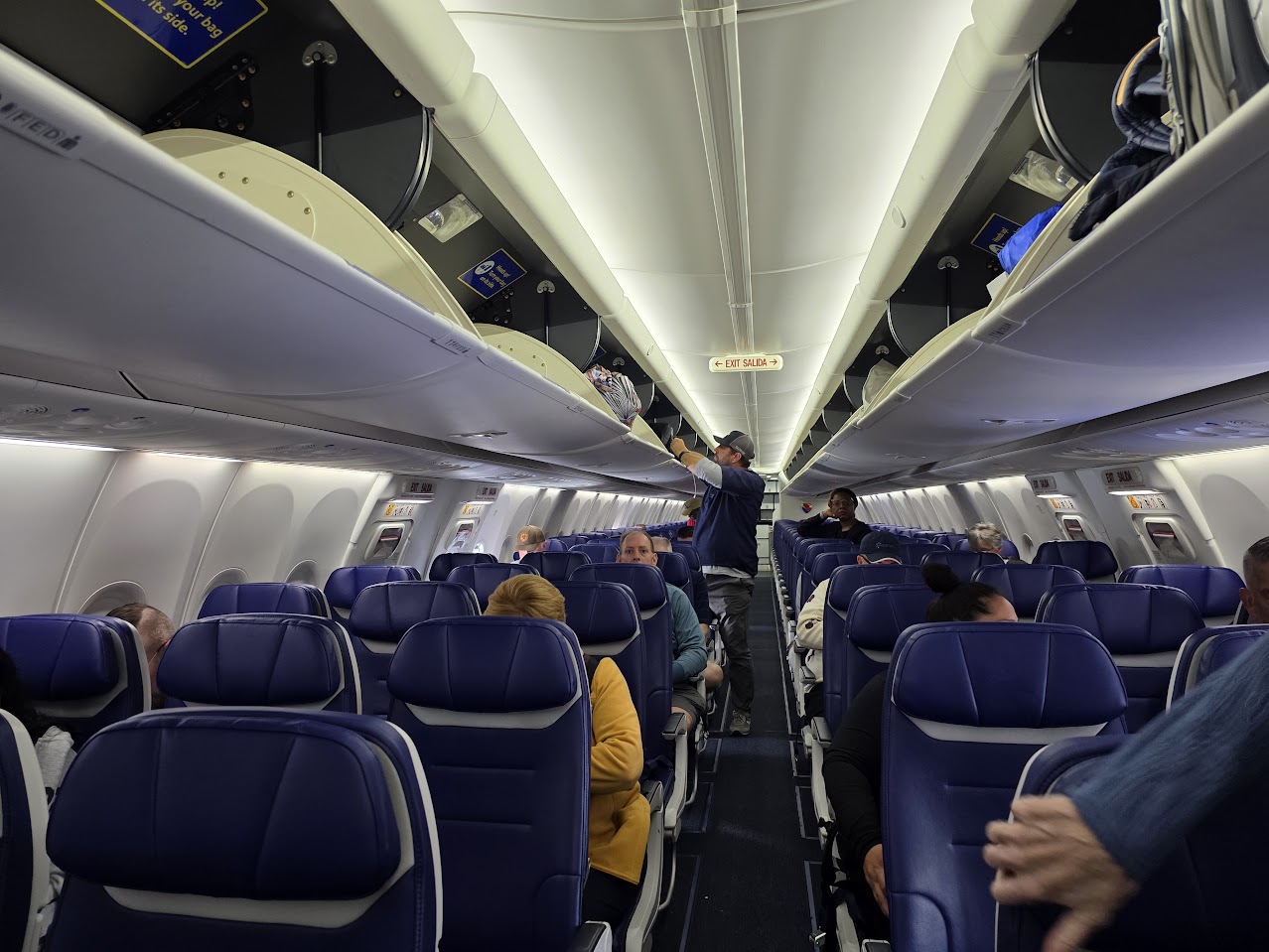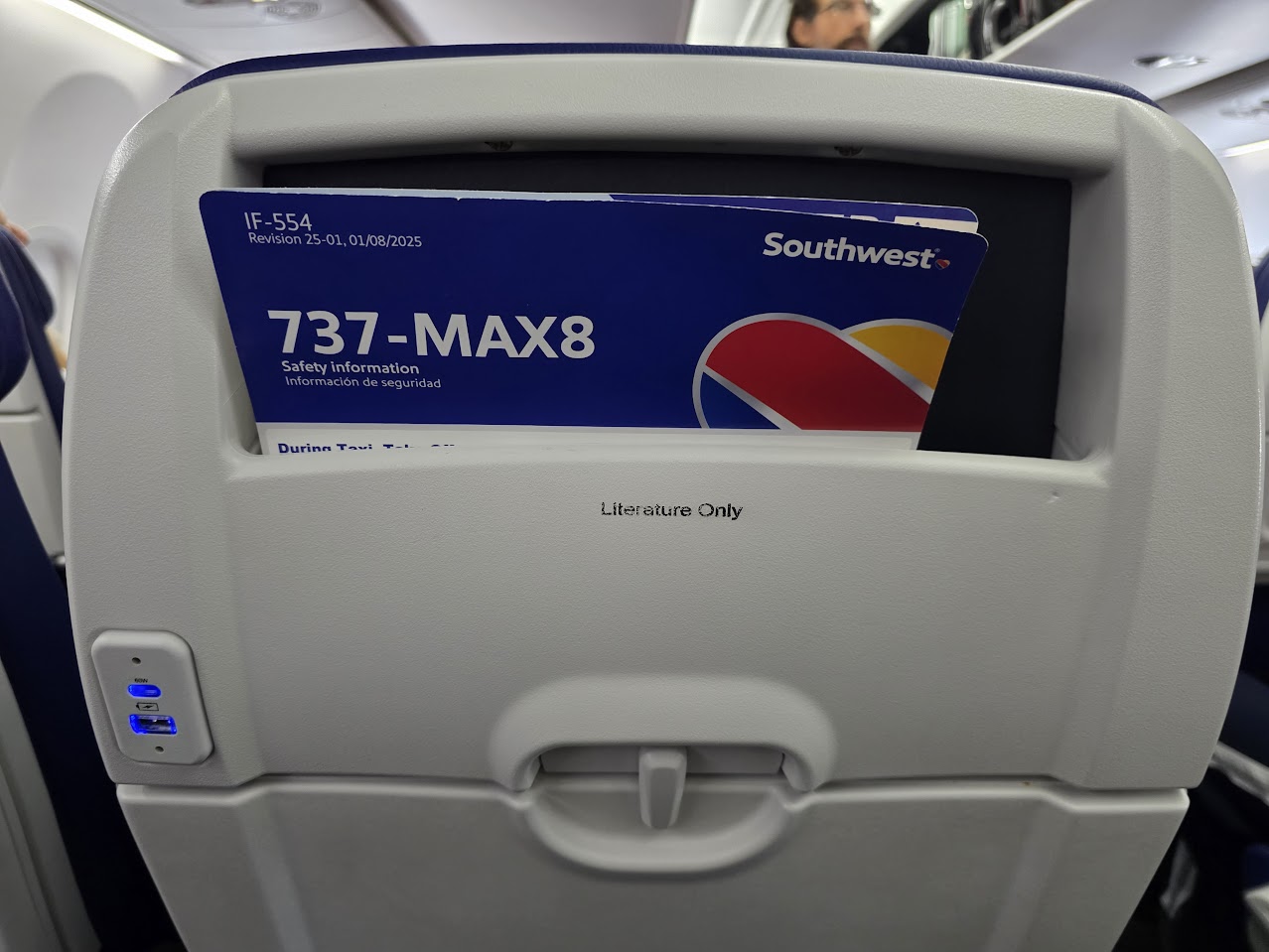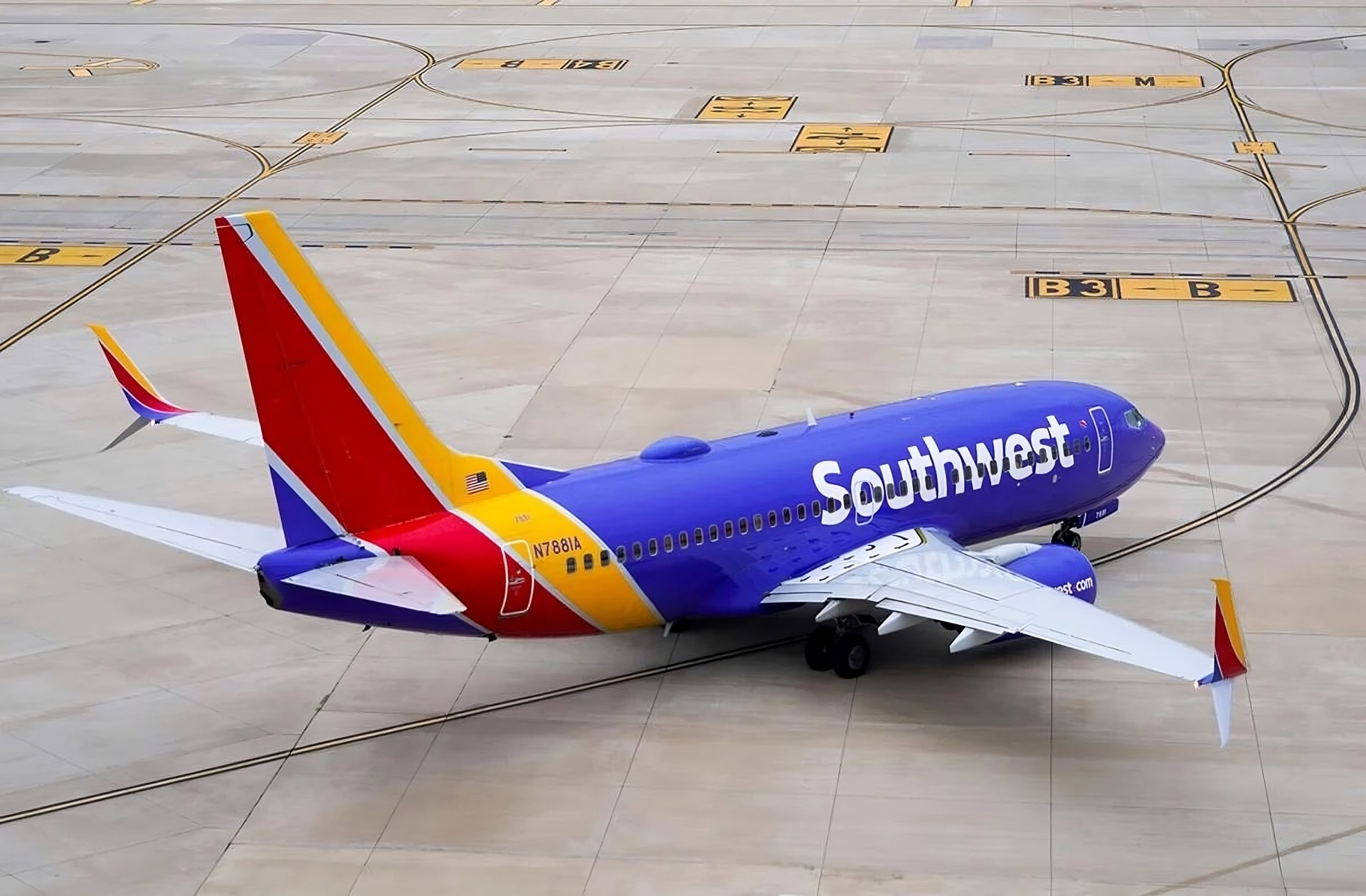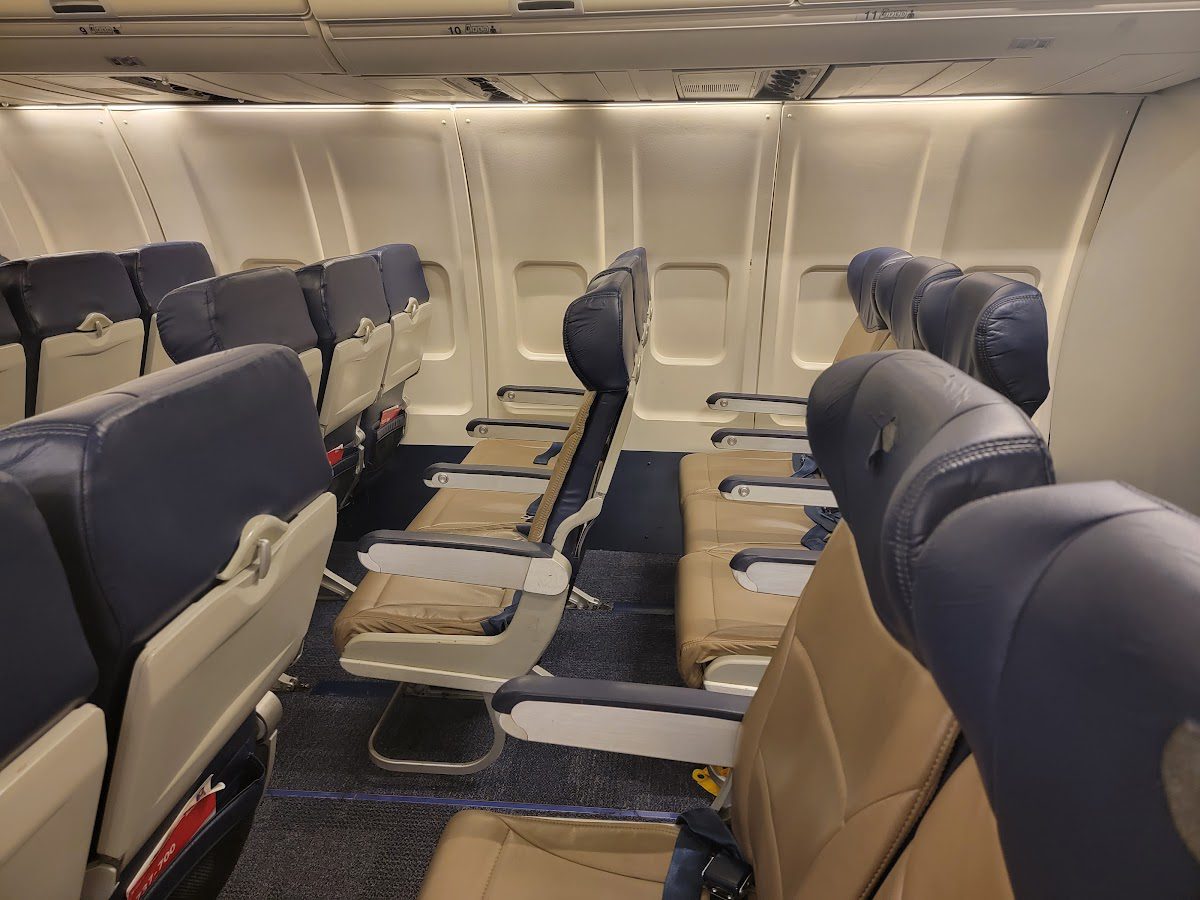Southwest Airlines will become the first U.S. carrier to restrict the use of power banks inflight for portable charging. Southwest also significantly lags American, Delta and United in offering passengers power at their seat.
The airline’s new policy, which goes into effect May 28, will no longer permit use of portable charging devices “while stored in a bag or overhead bin.” You’ll have to take your battery packs out of their bags and use them visibly at your seat.

The Southwest mobile app now provides a pop up notification: “If you use a power bank during your flight, keep it out of your bag and in plain sight. Do not charge devices in the overhead bin.”
I had no idea this was an issue.
byu/Minimum_Raspberry_81 inSouthwestAirlines
Ironically, Southwest is the major carrier you’re most likely to need a portable power brick with when flying. You’re likely to have seat power on American, Delta and United. Southwest has USB power only, and only on some aircraft.

Sometimes phones and other electronic devices catch fire – and this is actually something that airlines have long been preparing for.
A Royalair Philipines Airbus A320-214 plane (RP-C9799) made an emergency landing in Hong Kong after one of the passengers' power banks exploded inflight on 19 February.
After the explosion, smoke began to appear in the cabin, but there were no injuries.#safety pic.twitter.com/CfSgVkv4Gh
— FL360aero (@fl360aero) February 20, 2024
Electronics fires are usually manageable when they occur inside the passenger cabin of an aircraft, but not as manageable when they occur inside the cargo hold of a plane. In the cargo hold they can do fire suppression but can’t do anything beyond that.

That’s why a generation of ‘smart’ suitcases were been banned even as carry on bags, since there’s always the chance a carry on with an un-removable battery might have to be checked. (Such bags now come with removable batteries.) It’s important to keep lithium ion batteries and other potential combustibles out of a plane’s cargo area.
U.S. airlines board fire containment bags and heat resistant gloves on aircraft. Once the electronics that caught fire is isolated, the fire containment bag gets stored in a metal cart in the galley, to be retrieved when the aircraft lands.

If your device goes into ‘thermal runaway’ you should fully expect that it will be confiscated. If it ‘just’ overheats it may be returned to you. At least that’s the world standard, though. Here’s how it sometimes goes on China Southern Airlines:
Power bank fire on board China Southern CZ3539, Feb 25 2018. pic.twitter.com/cby6E62qRv
— ChinaAviationReview (@ChinaAvReview) February 25, 2018
This is why it was such a dangerous idea when the federal government sought to ban electronics in the passenger cabin in 2017, requiring customers to check them as baggage instead. Those fires might not get contained.


That’s not an unreasonable request. Any issues will be spotted right away and can be dealt with instead of waiting to see smoke from the overhead bin.
Singapore and Qatar have the same restrictions.
Agree with @TheJetsFan: I’m OK with this.
Send a thank you note to GK for never following through on the promised upgrades to the WIFI and the modifications to plug in at the seat that he made to Customers many, many years ago. In fact he began promising upgrades to the system as soon as he took the reigns from Herb. Very sad as I flew yesterday and the WIFI experience was horrible. But, then again, Elliott is only concerned about charging for seats and bags.
This is actually a great thing, took far too long to implement.
I do electronics testing and reviews for an unnamed company, and you would – or maybe you wouldn’t – be amazed at how shoddy some of these power banks are coming out of China right now. They are truly dangerous and it is a reasonable requirement; I would go even further and install smoke detectors in every third or fourth bin – smoke detectors are cheap.
Incredible that SWA failed to follow the market and retrofit its fleet with power outlets a decade ago when capital was cheap. Then again, SWA has a 3 year negative CAPEX CAGR of -60%…
Agreed seems reasonable. How to enforce though?
Add me to those who are fine with it, although I would say a device on your person (directly, not in a bag on your person such as a fanny pack) is acceptable even if not visible–you’ll notice the problem. There are a lot of shoddy batteries out there and even one that isn’t shoddy can be damaged without the owner knowing.
As for smoke detectors–if you’re going that route they are needed in every bin.
As for the device after a runaway–think it’s worth having at that point? Maybe you can pull the drive from a laptop but the machine itself is probably a goner.
I was recently in Europe, and they’re starting to adopte ‘USB-C only’ on newer aircraft (at least on KLM’s a321neo). So, remember to bring your newer chargers, folks. It’s fine for newer smart phones, but if you have a laptop, tough luck, I guess. Those flights are usually no more than 4 hours anyway.
@L737 — Agreed, reasonable, for now, though SWA really should have in-seat power options. I feel like everything with them lately has been ‘the beatings will continue until morale improves.’ You’ll show us your portable chargers, or else!
“Ironically, Southwest is the major carrier you’re most likely to need a portable power brick with when flying.”
Should be power bank.
The lithium ion batteries in power banks expand slightly when charging and contract slightly while discharging. This is not a problem but when the batteries start bulging, it means that a breakdown is starting to occur internally and the batteries should be trashed as soon as practically possible. You should check the power banks and cellphones regularly to see if they are starting to bulge. Even high quality lithium ion batteries can have problems. Use any flat surface or straight edge to check if there is any flat surface that is sticking out. On an airplane it could be as simple as using the edge of the safety card at right angles to the surface of the device. I currently have a Motorola cellphone that is starting to do this. It is less pronounced in the case but more noticeable with the case off. I have had cellphones have lithium ion batteries bulge and power banks do the same thing. A few have gassed. None have exploded and none have caught fire but they possibly could.
@1990 my MacBook Pro will charge or at least hold power and operate using a usb-c to usb-c connector on those outlets. I’d love to see everything go to wireless or usb-c charging. Would simplify my power cable needs.
Personally, I do preferentially avoid airlines that do not have powerports at the seats. If you want me paying to surf the web or you want to save money by not offering seat back IFE then you need to at least give me power. You listening, AA?
Probably it would be best safety wise to put something between the power bank and your skin while charging with it. A possible use for the things in the seatback pockets. New power banks are shipped to customers all of the time and rarely are there problems. New power banks are typically charged half full to three quarters full from my experience. They have not been cycled. These are probably the least likely to have problems even if the manufacturing process has been less than good (even expensive devices can have problems with their lithium ion batteries). Probably to have the least problems on airlines would be to have fairly new lithium ion batteries that are not charged more than 80% in devices. If the batteries are older, less charge is better. Take two power banks instead of one if you want to do more charging. An almost fully discharged lithium ion battery probably does not have enough energy to cause a problem unless it is physically damaged such as having something driven through it. Airlines could probably be more proactive by requiring that devices with lithium ion batteries have the batteries charged to 80% or less. Of course that would take more time and expect the customers to be honest instead of selfish.
@Parker — Good point! I rarely use laptops on planes, so I didn’t even realize my Dell is USB-C after all. I’m generally in-favor of the EU-model of standardizing these charging ports, so that we, consumers, aren’t having to purchase and carry so many different cables. Yet, implementing such ‘regulations’ would cut back on some ‘profits’ for those companies selling their own proprietary chargers and adapters. Oh no… As for AA, and all airlines, in 2025, they can easily include charging, Wi-Fi, and IFE screens, yet so few ‘do it all.’ In the USA, jetBlue is one. Delta is another. Except for their CRJs and some Embraers. So, why is this so hard for the rest?!
” these power banks are coming out of China right now. ”
What consumer power banks do NOT come from China.
I’m willing to bet – very few to none.